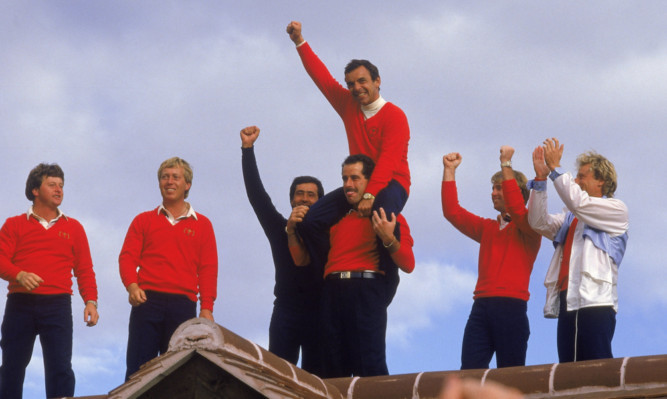The only thing that will be the same as 1973 in 500 days from now, says Tony Jacklin, is the stands will be full.
The countdown to the Ryder Cup at Gleneagles really starts to move now with that milestone being passed, but Jacklin, who played the last time the cup was held in Scotland at Muirfield 40 years ago and stamped his mark all over the competition as captain, knows just how much it has changed.
“The grandstands were full, it was like an Open, we always got great support for Ryder Cups,” said the four-time European skipper. “But obviously it was nowhere near as big as it is now.
“Even 30 years ago when I captained for the first time at Palm Springs, the official dinner, what’s now the gala dinner with the red carpet and all that glamour, was at Jack Nicklaus’ house.
“It was on his lawn and it was a garden-party type atmosphere hat was the whole vibe for the week.”
Jacklin’s influence, with the not-inconsiderable assistance of Seve Ballesteros, turned a biennial beano treated seriously in Britain and nowhere else into one of sport’s biggest worldwide spectacles, but he firmly believes that the ethos of the event is still the main attraction.
“The key to this whole thing, and the reason it’s got as big as it has, is because it’s pure and the players play as gentlemen with great sportsmanship,” he said. “They look each other in the eye after every round and win lose or draw, they say well played.”
It cannot be any coincidence that Jacklin’s captaincy and forceful advocacy for his players resulted in wins in 1985 and 1987 and a tie in 1989 which forever changed the competitive nature of the event.
“There’s an element of satisfaction, but all I really did was level the playing field,” he said. “Myself and Seve always took this view; just because you Americans have got more courses, more people, better weather, more money to play for, doesn’t mean to say that this day you will beat us. The Europeans still get great team unity out of that.”
Jacklin admires the American move to appoint Tom Watson captain at Gleneagles but doesn’t think it will affect the result.
He said: “Tom’s done it all in spades, but he can’t play for them.”
He added: “I’d be very surprised if Europe didn’t win.”
